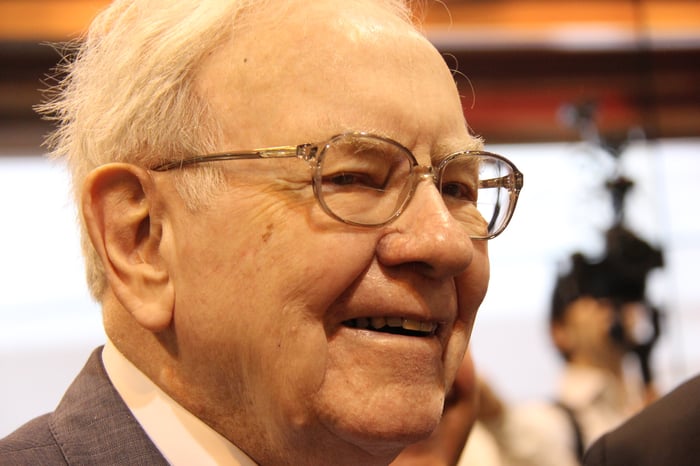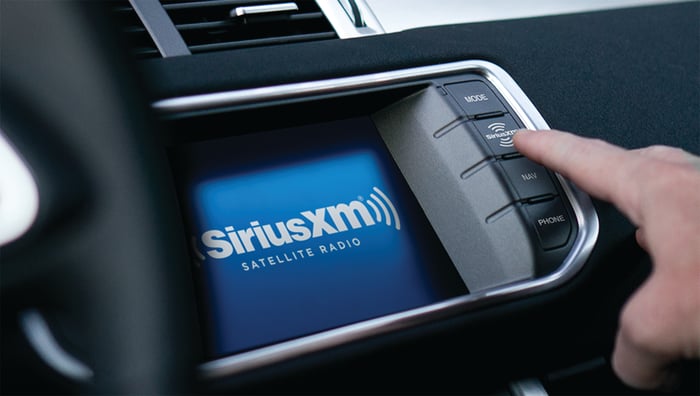For nearly sixty years, Berkshire Hathaway ( BRK.A -0.14%) ( BRK.B -0.40%) CEO Warren Buffett has consistently outperformed Wall Street’s main benchmark, the S&P 500, in terms of returns. By midday on Sept. 26, the cumulative return for Berkshire’s Class A shares (BRK.A) under his leadership had surpassed 6,080,000% over six decades—about 137 times the total return, including dividends, of the S&P 500 during the same period.
Achieving an average annual return close to 20% has earned Buffett, known as the Oracle of Omaha, a devoted following. Many investors choose to follow his lead by replicating his trades, made possible by quarterly Form 13F disclosures and occasional Form 4 filings.
Institutional investors managing at least $100 million in assets are required to submit a 13F filing within 45 days after each quarter ends. This document reveals which stocks, ETFs, and certain options top Wall Street investors bought or sold in the previous quarter.

Berkshire Hathaway CEO Warren Buffett. Image source: The Motley Fool.
Form 4, on the other hand, is required for company directors, executives, and anyone owning at least 10% of a public company. Whenever these insiders buy or sell shares, they must file Form 4 with the SEC within two business days of the transaction.
Thanks to Berkshire Hathaway’s 13F and Form 4 filings, it’s clear that its billionaire CEO has been steadily reducing Bank of America ( BAC -0.49%) holdings over the past year. However, these same filings also reveal substantial purchases of a historically undervalued legal monopoly in three of the last four quarters.
Warren Buffett has trimmed more than 427 million Bank of America shares
No sector is more familiar to Warren Buffett or has earned more of his trust than financials. He understands that banks and insurers are cyclical, rising and falling with the broader U.S. and global economy. This is generally positive, as periods of economic growth tend to last much longer than downturns.
Despite this, Buffett has been a net seller for 11 consecutive quarters, unloading a total of $177.4 billion in stocks. A significant portion of these sales comes from Bank of America, often referred to as "BofA."
Starting on July 17, 2024 (a date confirmed by Form 4 filings), Buffett began authorizing the sale of BofA shares and has continued since. What was once a position of over 1.03 billion shares has been reduced by 427,584,631 shares, or 41%, between July 17, 2024 and June 30, 2025.
One straightforward reason for these sales is profit-taking. Although Buffett advocates for long-term investing, he spent part of Berkshire’s May 2024 annual meeting discussing the benefits of realizing gains while corporate tax rates are historically low. While he was referencing Apple in that context, Bank of America is another major winner for Berkshire.
Investors may worry, though, that the selling could be motivated by more than just locking in profits.
For instance, no major bank benefited more from the Federal Reserve’s rapid rate hikes from March 2022 to July 2023 than BofA. However, when rates begin to fall, it can negatively impact Bank of America’s interest income.
The upside is that the central bank is moving cautiously and transparently with its monetary policy, which is good news for lenders and large banks like BofA. Still, being the most interest-sensitive among the big banks can be both an advantage and a risk, depending on the Fed’s policy direction.
Another concern is that Bank of America shares are no longer a bargain. When Buffett first invested in BofA preferred stock in August 2011, the common shares traded at a 62% discount to book value. Currently, BofA stock trades at a 41% premium to book value.

Image source: Sirius XM.
Berkshire’s billionaire leader keeps adding to this undervalued legal monopoly
Although Buffett has been selling more often than buying for almost three years, a few stocks have stood out to him in an otherwise expensive market. One such company is the legal monopoly in satellite radio: Sirius XM Holdings ( SIRI -0.27%).
After Sirius XM’s common stock merged with various tracking stocks (Liberty Sirius XM) in September 2024 and completed a 1-for-10 reverse split, Berkshire Hathaway owned 105,155,029 shares. Since September 30, 2024, Buffett has overseen the following purchases:
- Q4 2024: 12,313,544 shares acquired
- Q1 2025: 2,308,119 shares acquired
- Q2 2025: no new shares acquired
- Q3 2025: 5,030,425 shares acquired (totaling 124,807,117 shares held)
Although Berkshire’s 13F for the third quarter won’t be released until mid-November, Form 4 filings confirm that over 5 million Sirius XM shares were bought in late July and early August. With these purchases, Berkshire Hathaway’s stake in the U.S. satellite radio monopoly has climbed above 37%!
Buffett has long favored companies with durable competitive advantages. While Sirius XM competes with traditional and online radio, it is the sole holder of satellite radio licenses, giving it unique pricing power that other radio companies lack.
What may be even more appealing to Buffett is Sirius XM’s revenue structure. Traditional radio relies almost entirely on advertising, which works well during long economic expansions but can be challenging during brief recessions.
By contrast, in the first half of 2025, less than 20% of Sirius XM’s net sales came from advertising (mainly via Pandora). The majority—about 77%—came from subscriptions. Subscribers are much less likely to cancel during tough economic times than businesses are to cut ad spending, resulting in more stable cash flow for Sirius XM regardless of the economic cycle.
Buffett is also attracted to strong capital return programs, and Sirius XM delivers on this front. Its dividend yield is approaching 5%, roughly four times higher than the S&P 500’s yield. The company also buys back its own shares periodically, which can help increase earnings per share (EPS).
To sum up, Sirius XM shares are trading at historically low valuations. The stock is priced at 7.4 times expected 2026 earnings, representing a 43% discount to its average forward price-to-earnings ratio over the past five years.


